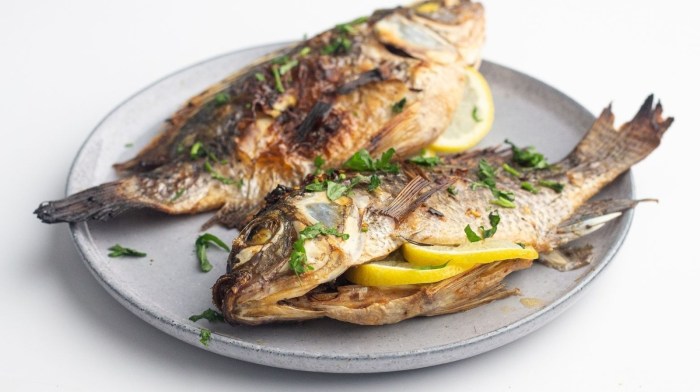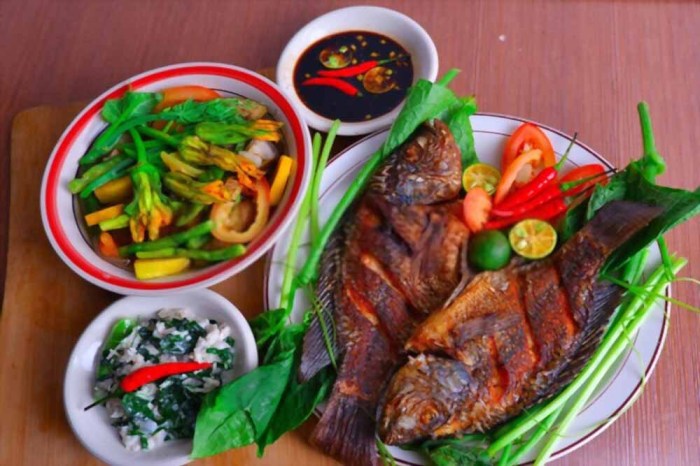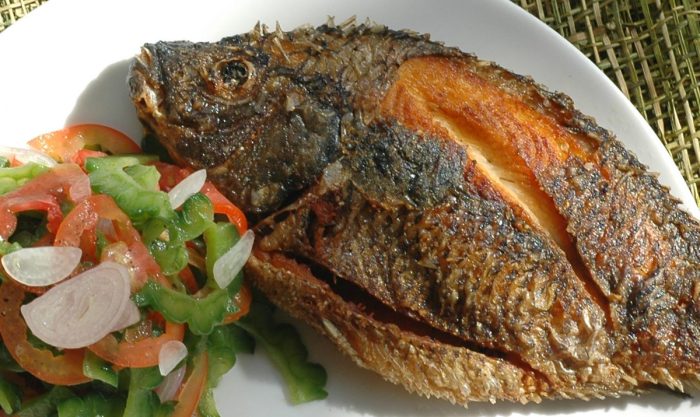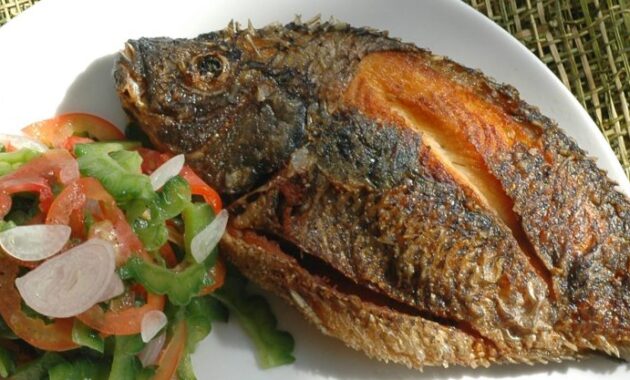How to cook a whole tilapia filipino style – In a world filled with endless possibilities, sometimes the simplest things can bring the most joy. Cooking a whole tilapia Filipino style is one of those simple pleasures that can transport you to a place of warmth and comfort. The process of preparing this dish is not just about feeding your body, but also feeding your soul with the rich flavors and traditions of Filipino cuisine.
Understanding the Basics

Before diving into the cooking process, it’s important to understand the key ingredients and techniques that make Filipino-style tilapia so special. The star of the dish is, of course, the whole tilapia fish, known for its delicate flavor and tender flesh. Other essential ingredients include garlic, onions, tomatoes, soy sauce, and vinegar, which come together to create a savory and tangy marinade.
Tips for Success
To ensure that your Filipino-style tilapia turns out perfectly, there are a few key tips to keep in mind. First, be sure to clean the fish thoroughly and remove any scales or innards before marinating. This will help to enhance the flavor of the dish and prevent any unwanted bitterness. Additionally, marinating the fish for at least an hour will allow the flavors to fully penetrate the flesh, resulting in a more flavorful end result.
What You Mean by Filipino Style
When we talk about cooking a whole tilapia Filipino style, we are referring to the unique blend of flavors and techniques that are characteristic of Filipino cuisine. This includes the use of ingredients like soy sauce, vinegar, and garlic, which are common in many Filipino dishes. The combination of these flavors creates a dish that is both savory and tangy, with a hint of sweetness that is truly irresistible.
Looking to add some festive cheer to your home this holiday season? Check out this guide on how to decorate your windows with holiday lights. Transform your windows into a dazzling display that will impress your neighbors and bring joy to all who pass by. Get creative with your light arrangements and make your home shine bright this holiday season!
Known for its Rich Flavors: How To Cook A Whole Tilapia Filipino Style
Filipino-style tilapia is known for its rich flavors and comforting aromas that can transport you to the bustling streets of Manila or the serene beaches of Palawan. The tender flesh of the fish absorbs the flavors of the marinade, resulting in a dish that is both succulent and satisfying. Whether enjoyed with a side of steamed rice or fresh vegetables, Filipino-style tilapia is sure to delight your taste buds and warm your heart.
Solution for a Delicious Meal
If you’re looking for a delicious and satisfying meal that is easy to prepare, cooking a whole tilapia Filipino style is the perfect solution. With just a few simple ingredients and a bit of time, you can create a dish that is packed with flavor and tradition. Whether you’re cooking for yourself or sharing a meal with loved ones, Filipino-style tilapia is sure to be a crowd-pleaser.
Detailed Information on Cooking Process
To cook a whole tilapia Filipino style, start by cleaning the fish and making a few diagonal cuts on each side. This will allow the marinade to penetrate the flesh more effectively. In a bowl, mix together soy sauce, vinegar, garlic, onions, and tomatoes to create the marinade. Place the fish in a shallow dish and pour the marinade over it, making sure to coat both sides evenly.
Cover and refrigerate for at least an hour.When you’re ready to cook, heat a pan over medium heat and add a bit of oil. Gently place the marinated tilapia in the pan and cook for about 5-7 minutes on each side, or until the fish is cooked through. Serve the tilapia hot with a side of steamed rice and enjoy the delicious flavors of Filipino cuisine.
Describing the Dish in Depth

Filipino-style tilapia is a dish that embodies the vibrant and diverse flavors of Filipino cuisine. The tender flesh of the fish is enhanced by the savory and tangy marinade, creating a dish that is both comforting and satisfying. The garlic, onions, and tomatoes add depth and complexity to the flavor profile, while the soy sauce and vinegar provide a tangy kick that is truly unforgettable.Each bite of Filipino-style tilapia is a journey through the rich culinary traditions of the Philippines, where food is not just sustenance but a celebration of life and community.
Whether enjoyed at a family gathering or a quiet dinner at home, Filipino-style tilapia is a dish that brings people together and nourishes both body and soul.
Conclusion

In conclusion, cooking a whole tilapia Filipino style is a rewarding experience that allows you to connect with the flavors and traditions of Filipino cuisine. By following a few simple steps and using quality ingredients, you can create a delicious and satisfying dish that is sure to delight your taste buds and warm your heart. So why not give it a try and experience the magic of Filipino-style tilapia for yourself?
FAQs
Q: Can I use frozen tilapia for this recipe?
A: While fresh tilapia is always preferable, you can use frozen tilapia as long as it is thawed properly before cooking.
Q: Can I substitute other types of fish for tilapia?
A: While tilapia is traditional for this recipe, you can experiment with other white fish varieties such as snapper or grouper.
Looking to add some festive cheer to your home this holiday season? Learn how to decorate your windows with holiday lights to create a magical ambiance. Check out these tips and tricks on how to decorate your windows with holiday lights and make your house the talk of the town!
Q: How long should I marinate the tilapia?
A: It is recommended to marinate the tilapia for at least an hour to allow the flavors to fully penetrate the flesh.
Q: Can I grill the tilapia instead of pan-frying?
A: Yes, you can certainly grill the tilapia for a smokier flavor, just be sure to adjust the cooking time accordingly.
Q: What are some good side dishes to serve with Filipino-style tilapia?
A: Steamed rice, sautéed vegetables, or a fresh salad are all excellent choices to complement the flavors of the tilapia.

